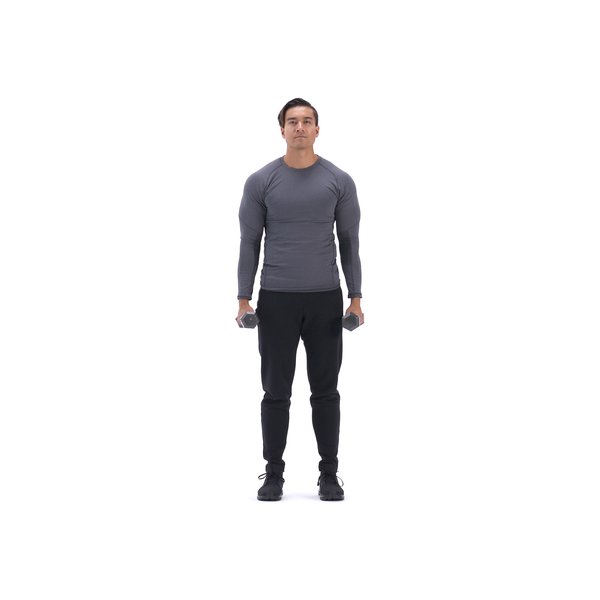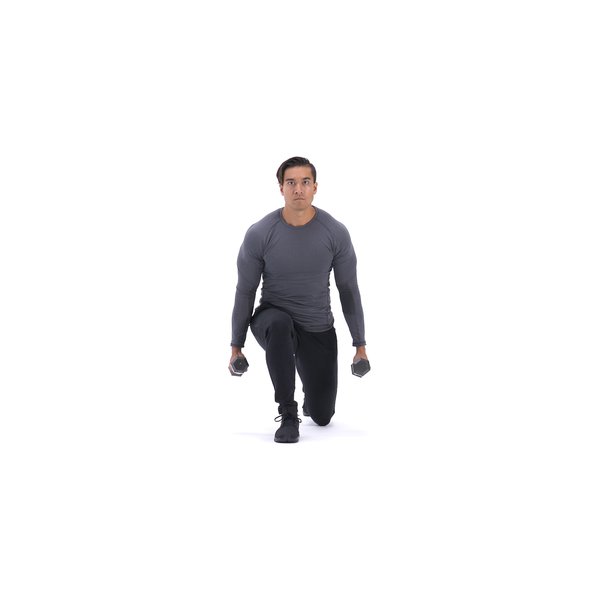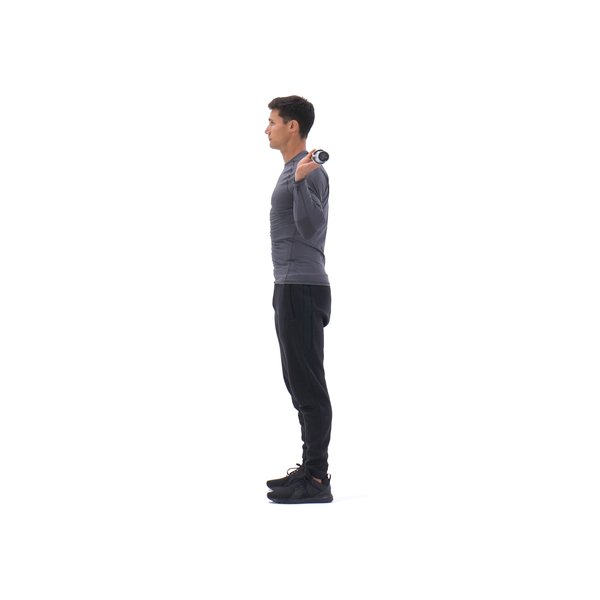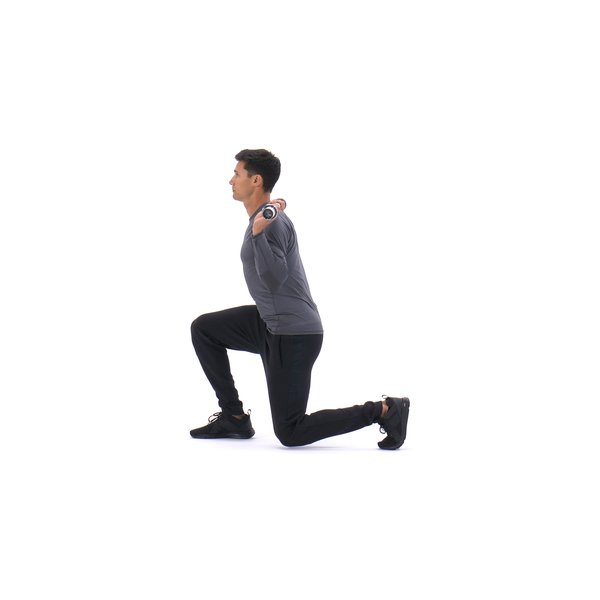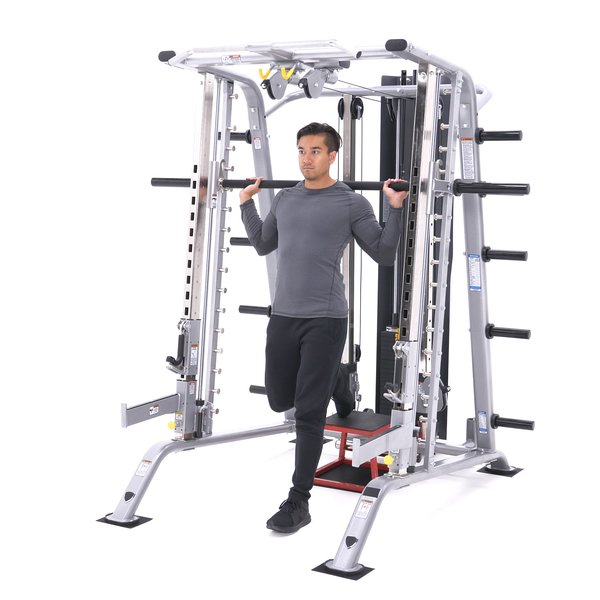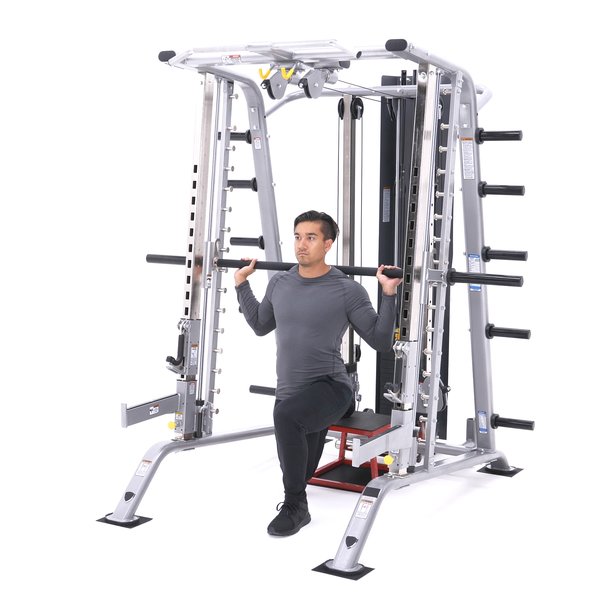Dumbbell reverse lunge Images
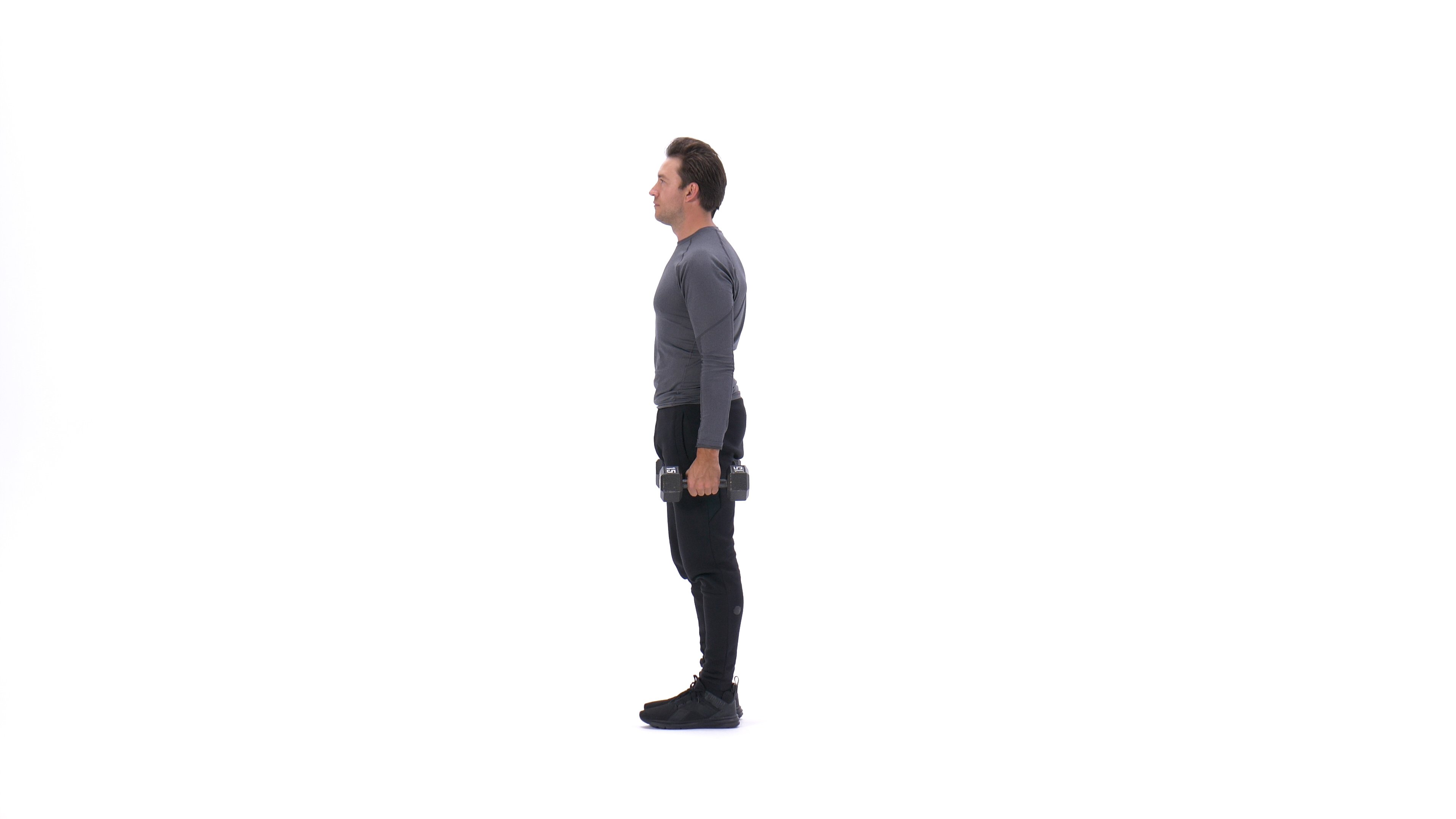
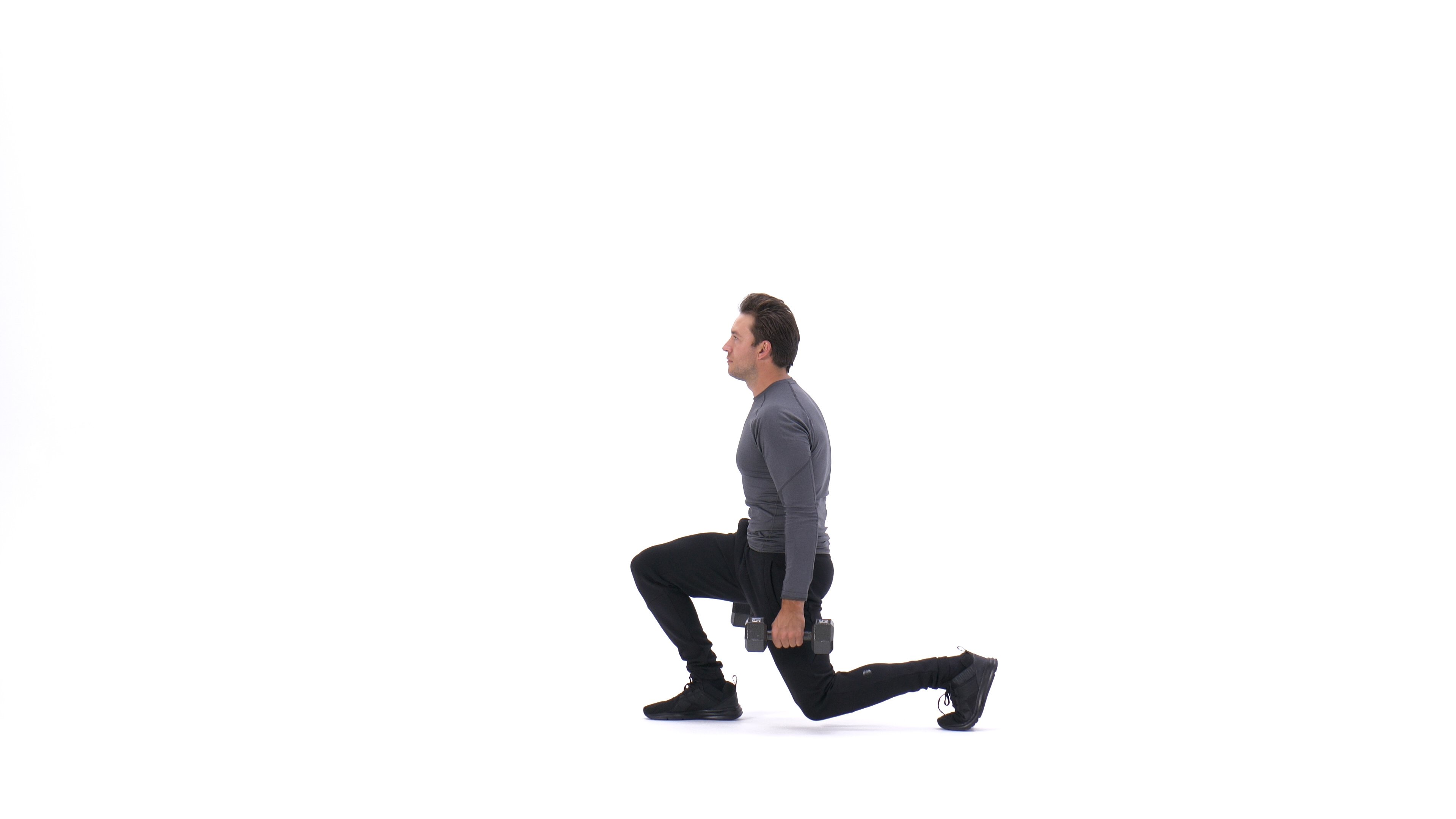
Dumbbell reverse lunge Instructions
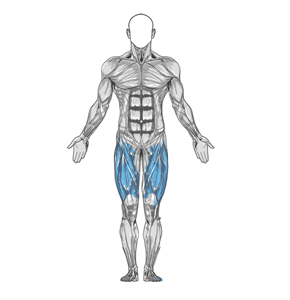
- Stand with your torso upright holding two dumbbells in your hands by your sides. This will be your starting position.
- Step backward with your right leg around two feet or so from the left foot and lower your upper body down, while keeping the torso upright and maintaining balance. Inhale as you go down. Tip: As in the other exercises, do not allow your knee to go forward beyond your toes as you come down, as this will put undue stress on the knee joint. Make sure that you keep your front shin perpendicular to the ground. Keep the torso upright during the lunge; flexible hip flexors are important. A long lunge emphasizes the Gluteus Maximus; a short lunge emphasizes Quadriceps.
- Push up and go back to the starting position as you exhale. Tip: Use the ball of your feet to push in order to accentuate the quadriceps. To focus on the glutes, press with your heels.
- Now repeat with the opposite leg.
Variations: There are several ways to perform the exercise. You can do what I call a static lunge where your starting position is with one of your feet already forward. In this case, you just go up and down from that starting position until you are done with the recommended amount of repetitions. Then you switch legs and do the same. A more challenging version is the walking lunges where you walk across the room but in a lunging fashion. For walking lunges the leg being left back has to be brought forward after the lunging action has happened in order to continue moving ahead. This version is reserved for the most advanced athletes.
Lunges can be performed with dumbbells as described above or with a barbell on the back, though the barbell variety is better suited for the advanced athletes who have mastered the exercise and no longer have balance issues.


